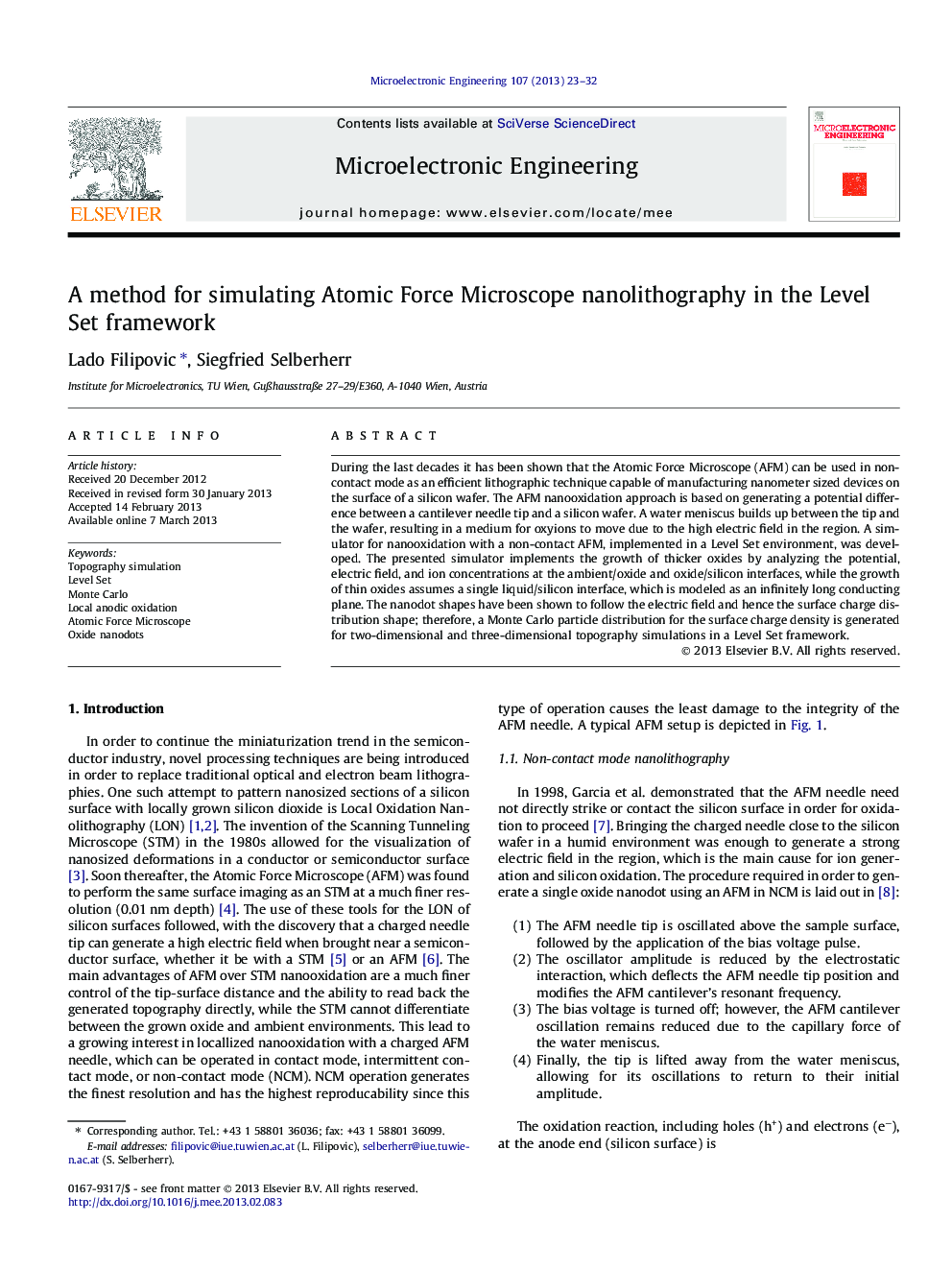| Article ID | Journal | Published Year | Pages | File Type |
|---|---|---|---|---|
| 539235 | Microelectronic Engineering | 2013 | 10 Pages |
During the last decades it has been shown that the Atomic Force Microscope (AFM) can be used in non-contact mode as an efficient lithographic technique capable of manufacturing nanometer sized devices on the surface of a silicon wafer. The AFM nanooxidation approach is based on generating a potential difference between a cantilever needle tip and a silicon wafer. A water meniscus builds up between the tip and the wafer, resulting in a medium for oxyions to move due to the high electric field in the region. A simulator for nanooxidation with a non-contact AFM, implemented in a Level Set environment, was developed. The presented simulator implements the growth of thicker oxides by analyzing the potential, electric field, and ion concentrations at the ambient/oxide and oxide/silicon interfaces, while the growth of thin oxides assumes a single liquid/silicon interface, which is modeled as an infinitely long conducting plane. The nanodot shapes have been shown to follow the electric field and hence the surface charge distribution shape; therefore, a Monte Carlo particle distribution for the surface charge density is generated for two-dimensional and three-dimensional topography simulations in a Level Set framework.
Graphical abstractFigure optionsDownload full-size imageDownload as PowerPoint slideHighlights► A local oxidation nanolithography simulator is created in the Level Set framework. ► 3D simulations include oxide–ambient, oxide–silicon, and trapping layer interfaces. ► Potential and electric field between the needle tip and the substrate is calculated. ► Nanodot shape generated to follow the surface charge density at the silicon surface. ► Monte Carlo particle distribution for surface charge density is calculated.
